Winter Willet Transparent Watercolor
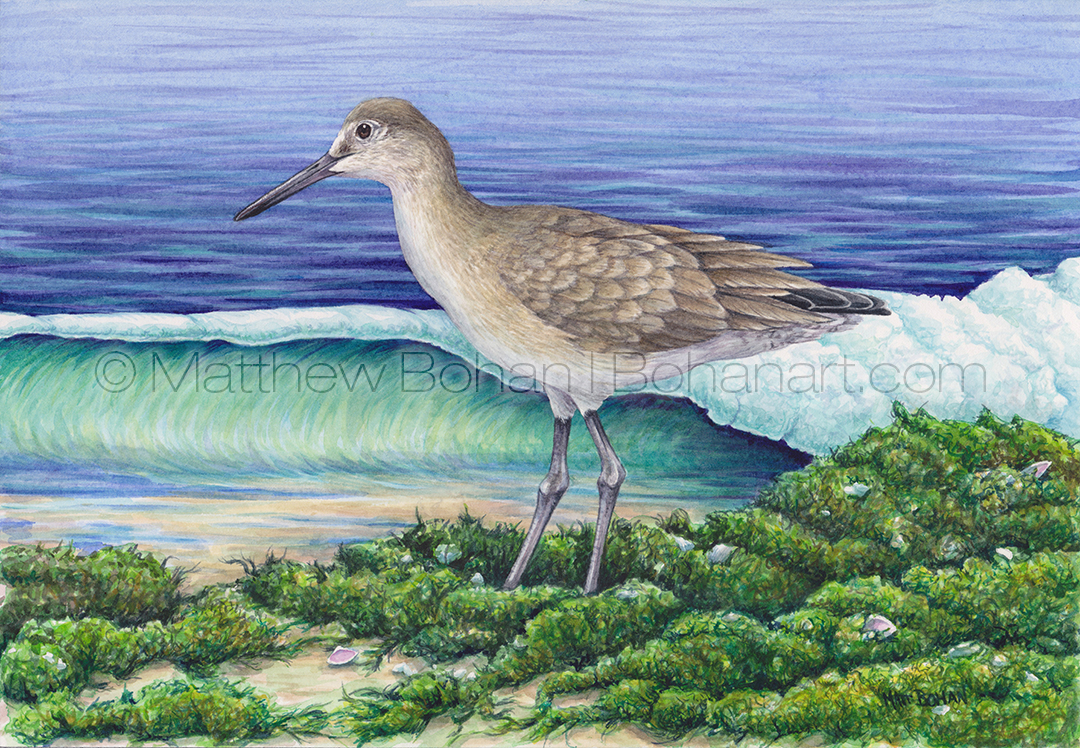
I love birds but have a definite weak spot in my life list when it comes to shorebirds. Having lived mostly inland, far away from the coast, I’ve missed out on seeing many of these birds. I enjoy watching them and learning about them, but I don’t have much history with shorebirds. Growing up we’d often vacation on Long Island. My dad loved the beach, so we’d usually pick a coastal destination. We’d see sanderlings, terns and gulls, but most birds went unidentified beyond that. The rest of the year, it was back to the forests and fields of western New York.
In recent years I’ve had the chance to get more shorebird photos to paint from. It’s still a stretch for me. For example, this was the first time I’d ever painted a breaking wave! It’s always is good to try new things, and this painting included a bunch of new challenges for me.
Pine Siskin Pencil Sketch p82
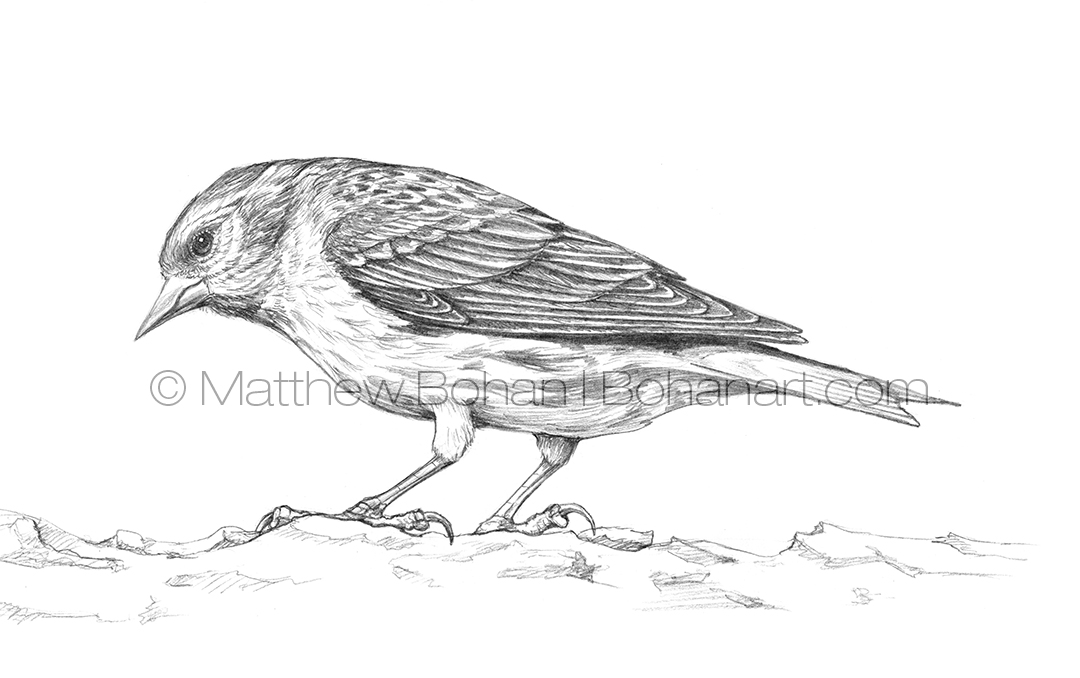
Winter finches are always a welcome sight. After all the migrants trail off, it’s nice to see old friends at the feeders. Pine Siskins are fairly reliable. We get them at the feeders every year, though the quantity tends to vary dramatically. A finch interruption has been predicted for this year, so we might get more. I’m definitely ready to see some redpolls and, hopefully, some crossbills as well, but what’d I’d really like to have in the yard is an Evening Grosbeak. It’s been years since I last saw that species, and it’s one of our son’s favorites, so I’m keeping my fingers crossed that he gets to see one in person this year!
Yellow-crowned Night Heron Pencil Sketch p81

Night-herons are undeniably neat creatures. I first came across them during trips to Florida when I was a grad student and assisting with a course called Ecology of the Everglades. I had a tough time picking which I liked better, the Yellow-crowned or Black-crowned. Typically, the one I’m currently looking at is my favorite. It’s interesting that they seem to prefer slightly different habitats. Of the two, black-crowneds are more likely to be found in Michigan and Ohio. My wife and I used to go on birding dates and often came across them roosting in the Shaker Lakes are of Cleveland, Ohio.
I took photos of this cooperative Yellow-crowned Night Heron at Ding Darling National Wildlife Refuge on Sanibel Island in Florida. It was napping most of the time and would occasionally open up an eye and preen some pin feathers, then go back to napping. I was amazed at how dusty this guy was with all the feather crumbles from molting. He had the worst case of bird dandruff imaginable. If he were going to hang with the glamorous crowd, he needed some Selsun Blue, Denorex, Tegrin, Head and Shoulders or better yet, some T-gel. Sadly, the shampoo industry doesn’t seem to market to birds. While this seems unfair, it isn’t without reason. As always, it all comes down to money. While the birds posses a great need of dandruff shampoo, they lack a rather important thing: pockets. Without pockets they have no place to keep money. No money, no dandruff shampoo. No dandruff shampoo, no glamor. They are just skin-flake-ridden pariahs of the animal world, and sadly, those black and dark gray feathers show it off all too well. Those snobbish egrets have it so easy. Their white never shows the dandruff.
Okay, so birds also lack opposable thumbs to handle money, making that three things they are lacking. Pockets, money and thumbs. But they definitely have dandruff. I wonder if they have bad breath too? I’d imagine the vultures do. Too bad. They are just going to have to live with it, because they don’t have pockets.
Sandhill Crane Pencil Sketch p80

Growing up in western New York state, I never saw Sandhill Cranes. My first encounter with one was during a bike ride shortly after moving to Ann Arbor to go to grad school at the University of Michigan. Rolling along a quiet country road about 15 miles from campus, I spied a few in a farmer’s field. They were pretty far away, but there was no mistaking their identity. They were undeniably Sandhill Cranes! As the weeks went by I saw plenty more, some even fairly close. Over the years I’ve probably seen thousands in this state, including colossal numbers at places like Mud Lake Marsh near Jackson, but it still gives me a thrill to catch a glimpse of one or hear their bugling call.
Phyllis Haehnle Memorial Sanctuary is a great place to see them in the fall. There you can be treated to the sight of vast numbers flocking in from a day in the fields. If the wind direction and weather are right, you might witness hundreds—or even thousands—flying right over your head in the golden light of sunset. I can definitely think of worse ways to wrap up a day!
I got photo references for this drawing at Kensington Metropark near Brighton, Michigan. A few sandhills there have become habituated to people. They must have been used to handouts, because they sauntered right up next to us. What would you offer a crane?
I usually see them munching on waste corn in fields. I know they are somewhat omnivorous, downing everything from seeds and invertebrates to other bird’s nestlings. One friend told us about her sister in Florida, who had a crane habituated to come to her back door where she would feed it hot dogs! That seems like a bad idea in so many ways. Of course, hot dogs always seem like a bad idea to me. I don’t think I’ve touched one for at least 20 years. Do you think the bird came back looking for relish? “Come on lady, let’s put the ‘omni-’ in omnivore!”
Sometimes the sandhills at Kensington were too close to focus on. It is pretty breathtaking to get so close to a huge “wild” bird and have it look you right in the eye, even if it seems a little disappointed that you don’t have any corn or hot dogs. Hmm… maybe they were looking for corndogs?
Crazy Horse Transparent Watercolor
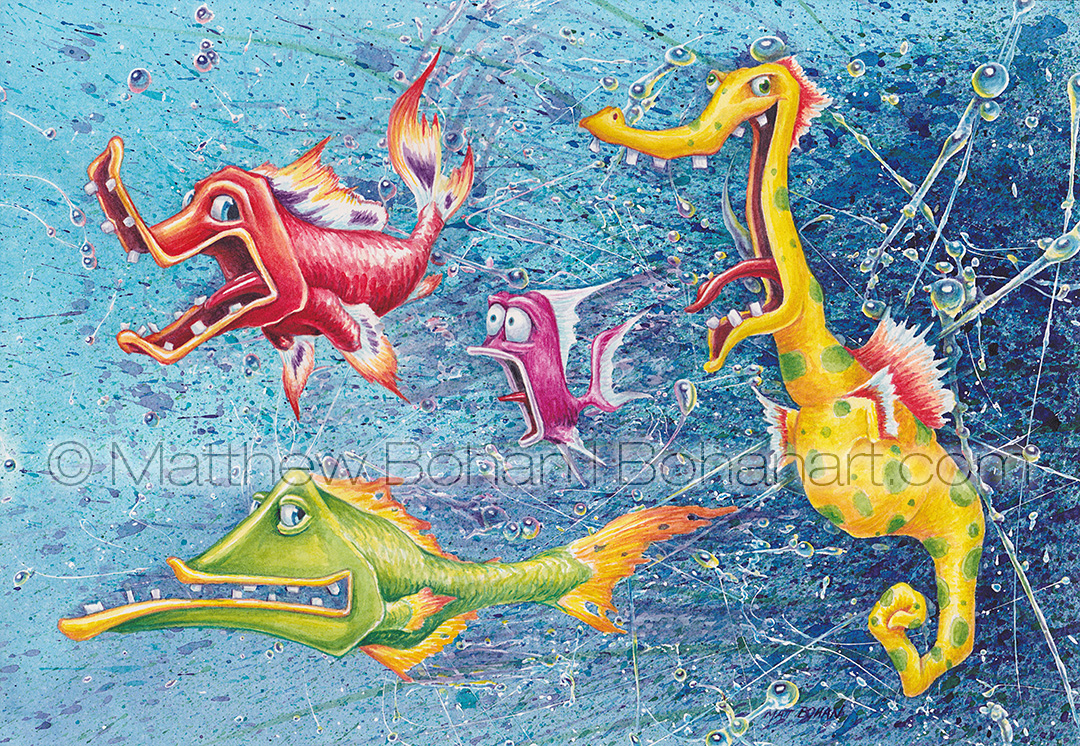


While doodling around one day I started a sea horse drawing. With these caricatures I’m always anthropomorphizing. It seems to me that seahorses are always portrayed as beautiful and classy creatures. Why should they get all the glory? Come on… I’m sure there are at least a few sociopaths, jerks or unhinged individuals among their populations! I wanted to draw one of the “lesser represented” personalities. So out of the pencil came this critter. After that I just needed to add a few terrified victims furiously swimming away, trying to avoid the deranged sea horse.
Even from across the room, our kids can always tell when I’m drawing cartoons. I couldn’t figure out how they knew until then they let the cat out of the bag: “You always make crazy faces while you draw them.” Aha! Now even I notice myself doing it.
Cedar Waxwing on Blue, Transparent Watercolor
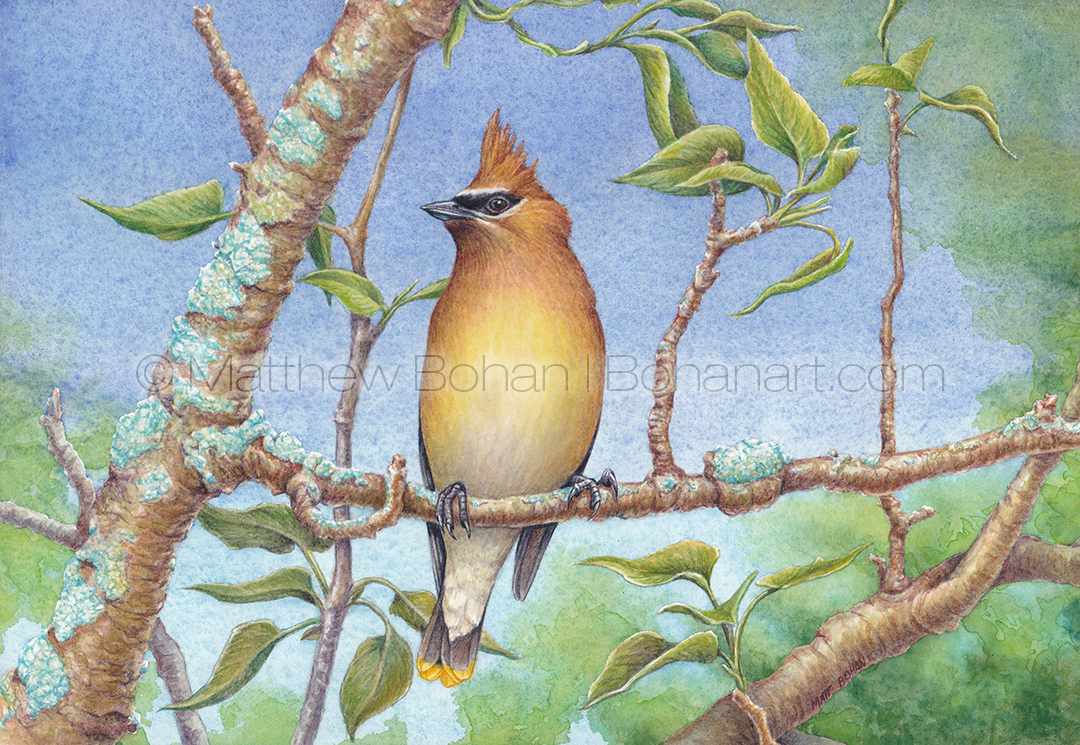
The sleek, fine feathering of Cedar Waxwings makes for a good challenge in watercolor. When picking out what to paint next, I usually try to choose things I’ve not done before. Breaking new ground keeps things fresh and offers new challenges. If you are always doing the same things, you aren’t learning. I find that with watercolor there is always something to learn, even after using the medium for over forty years.
I remember one of our ski instructors saying, “If you aren’t falling, you aren’t trying hard enough!” That’s true with many things. You learn the most when you take on new challenges and work outside your comfort zone. That being said, I couldn’t resist painting another Cedar Waxwing! Some birds are worthy of multiple paintings, and the subtle gradients and feathering on waxwings make for new challenges every time.
In looking back at my paintings, I think the bird I’ve painted the most is the Great Blue Heron, followed by Great Egrets, Green Herons and Belted Kingfishers. There seems to be a trend with the fish-eaters. I guess compared to the hundreds of paintings I’ve worked on, five or so Great Blues isn’t that many? Herons and egrets are fun to paint because their long necks can break up the page in dynamic ways, making for compelling designs. Composing for smaller birds can be more of a challenge because of my ongoing avoidance of the “bird on a stick” look.
Cedar Waxwing photos are fairly easy to come by in our yard during the month of April, when they visit to eat viburnum berries. I can use our garage as a photo blind and get good close-up photos. Viburnum fruit must be pretty low on the list of favorite waxwing foods, because they wait until pretty much all the other options have been depleted before resorting to it. I guess it’s like the can of wax beans that has been sitting in the back of your cupboard for eight years. There’s always something more appetizing than that!
Early Halloween…Egyptian Hats! Thoth Ibis and Unified Egyptian Crown
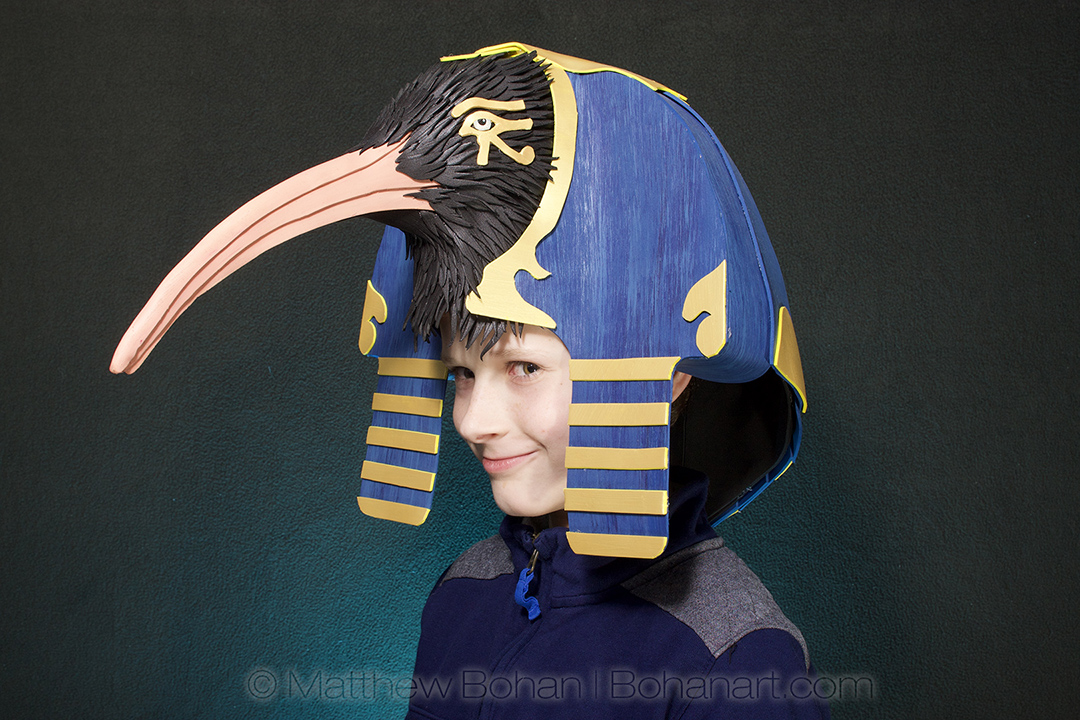

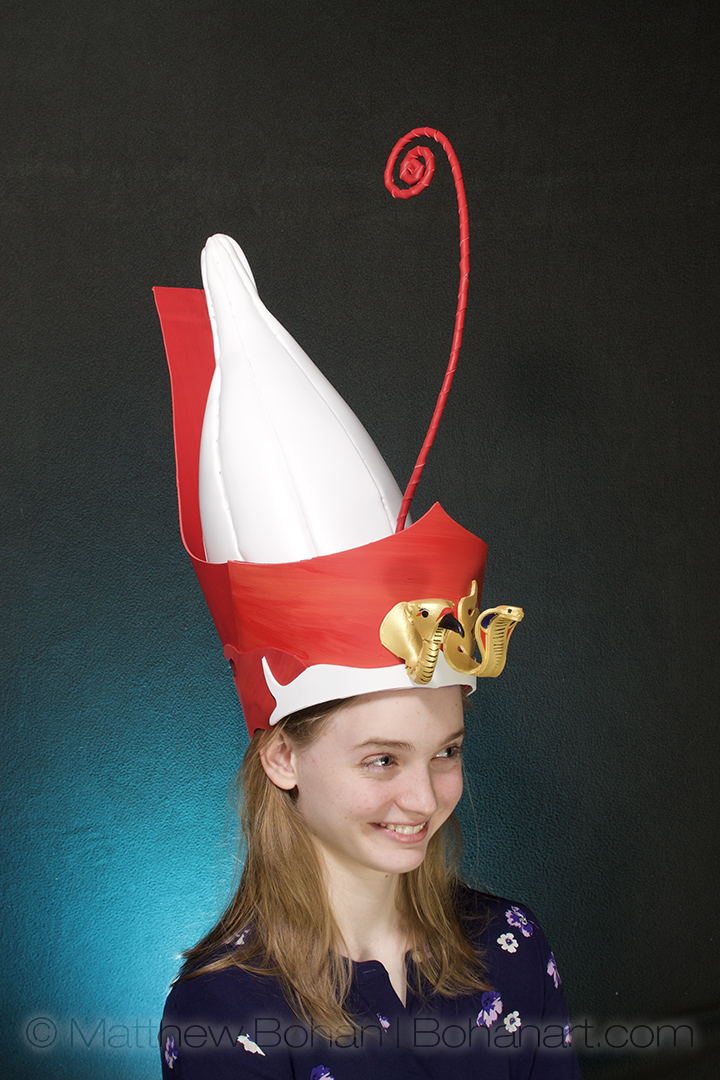
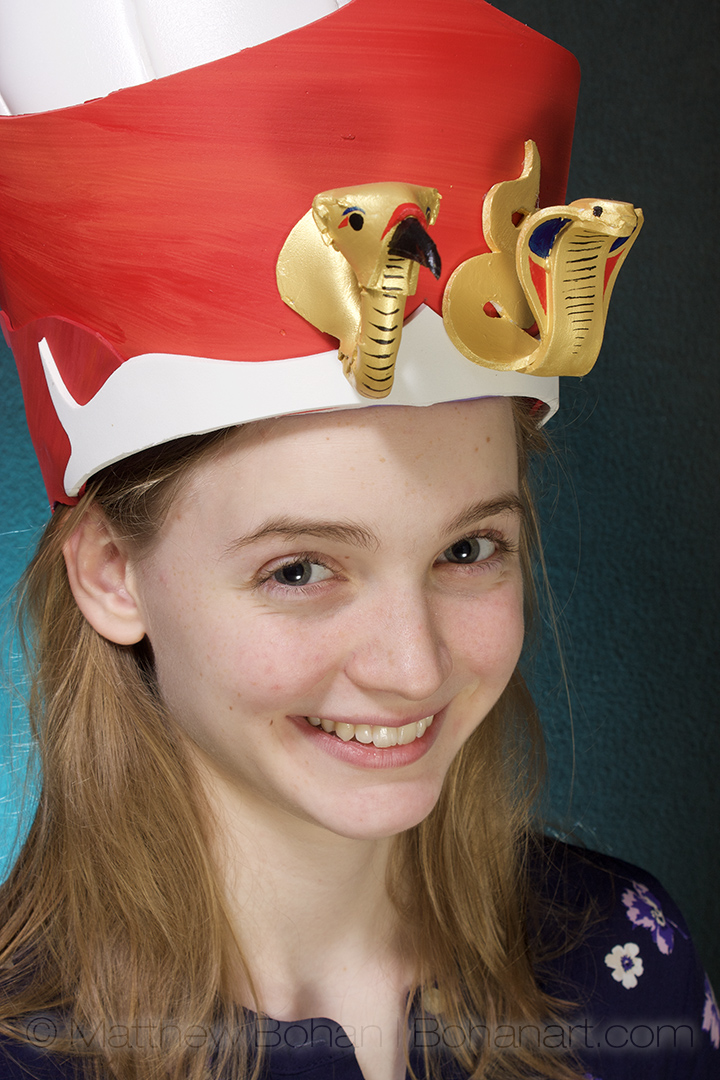
Unlike many of the last few years, this year’s Halloween hats were created months ago. While I was in Florida with my brother last winter, I got a call from home informing me about an upcoming Egyptian-themed costume party. It had been suggested that Timmy could wear an Egyptian skirt (which is really more like a kilt) and that Kelly could wear a toga. To say Timmy was put off by the idea is a colossal understatement, nor was Kelly keen on the idea of wearing a bed sheet, especially since most of hers are covered with cute little penguins or similar patterns. I told them not to worry. When I got back from Florida, we’d get creative. As a kid I was obsessed with Egyptian art for a time, so this could be fun. On the other hand, returning shortly before the party meant I’d have an insanely tight deadline.
After my return we threw around a few ideas, including Horus, the falcon-headed god; Anubis, the jackal-headed god; and Sobeck, the alligator headed god before settling on Thoth, the über-cool ibis-headed god. For Kelly I decided to make the red-and-white Unified Egyptian crown.
The hats were assembled with sheet craft foam, acrylic paint and, as my burned fingers could prove, loads of hot glue. The ibis hat came together without much trouble. The problems began while working on Kelly’s hat with less than a day to go—in the middle of a huge snowstorm. I discovered that I barely had any white sheet foam! A trip across town to Hobby Lobby was all but impossible. In my best “Red Green” reuse mode, I rummaged around the basement to find a big foam drawer liner that was somewhat like the sheet craft foam. As I started using it, I became quickly aware of the inferiority of the material. The “normal” sheets are very predictable, just the right thickness for bending, and don’t melt when hit with hot glue. The drawer liner, however, started to melt under heat and ripped pretty easily. With no other choice, I did my best. The inside white of the crown was not anywhere near what I wanted it to be. Due to the inferiority of the foam, it turned out sort of ribbed, which was just wrong. I did have a blast making the little cobra and vulture head out of the foam, though.
In typical Halloween hat fashion, I finished with barely an hour to spare. At the party there were oodles of homeschoolers, all with incredibly cool costumes, including another red and white crown. One of the kids had made it with duct duct tape, and it was amazing.
To see Halloween Hats from past years, check this: https://blog.bohanart.com/2014/10/halloween-bird-hats-2/ and https://blog.bohanart.com/2016/08/hummerhat/.
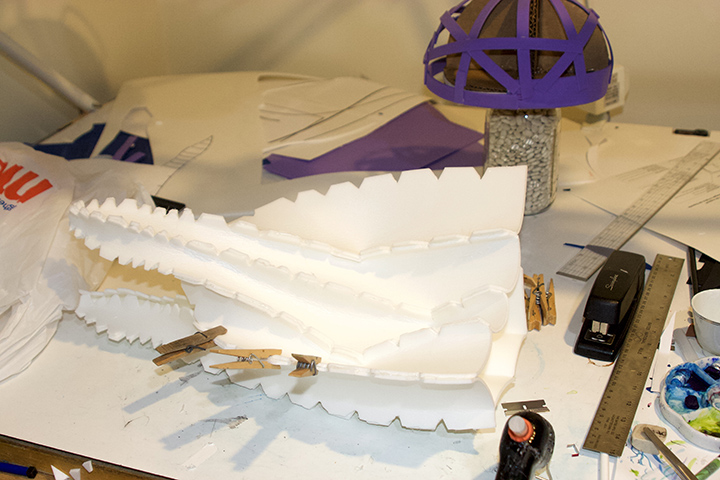
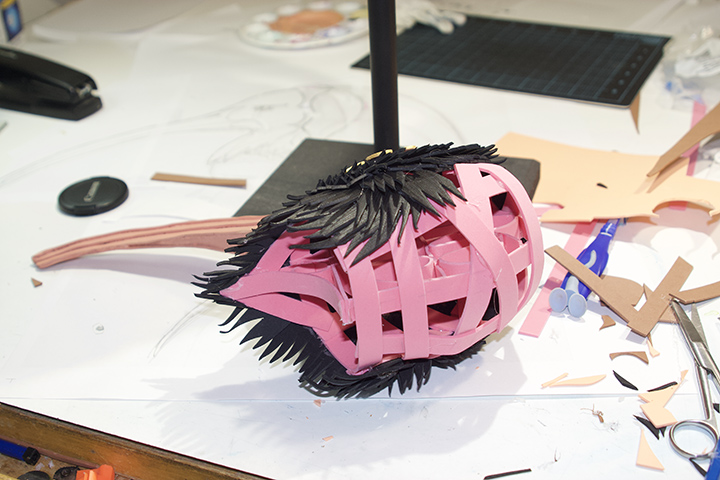


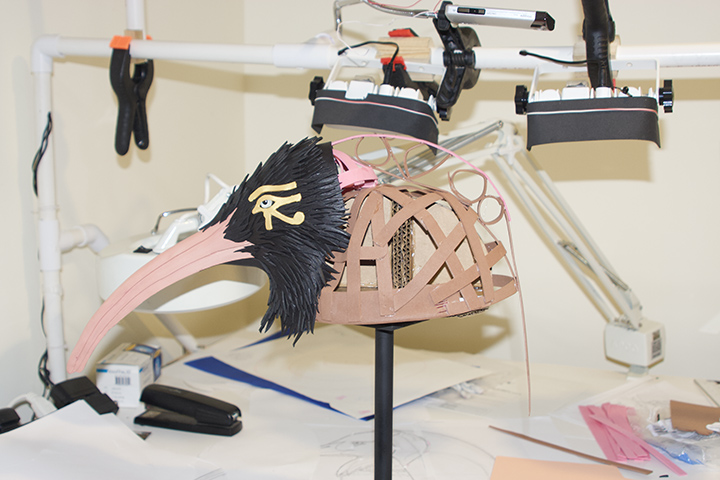
Andean Condor (Pen and Ink)

This is a bit of a change in media for me. I haven’t done a pen-and-ink drawing in over 20 years! I was cleaning up my flat files, going through old paintings and sketches when I came across a piece of illustration board with a sketch of an Andean Condor on it. I remember doing a watercolor painting of the same bird. At some point I transferred the sketch onto a scrap of Letramax 2000 illustration board. That wasn’t my favorite surface to work on, and I think that’s why it sat around for ages without being touched.
At any rate, during a gap between work projects recently, I decided I should either finish the piece or throw it away! Although it had been ages, I quickly remembered why I didn’t like working on that board. A decent surface for other needs, it isn’t smooth enough for good pen and ink, like clay boards or films like Denril. Anyhow, I soldiered on and finished it.
Black-throated Green Warbler, Pencil Sketch p77
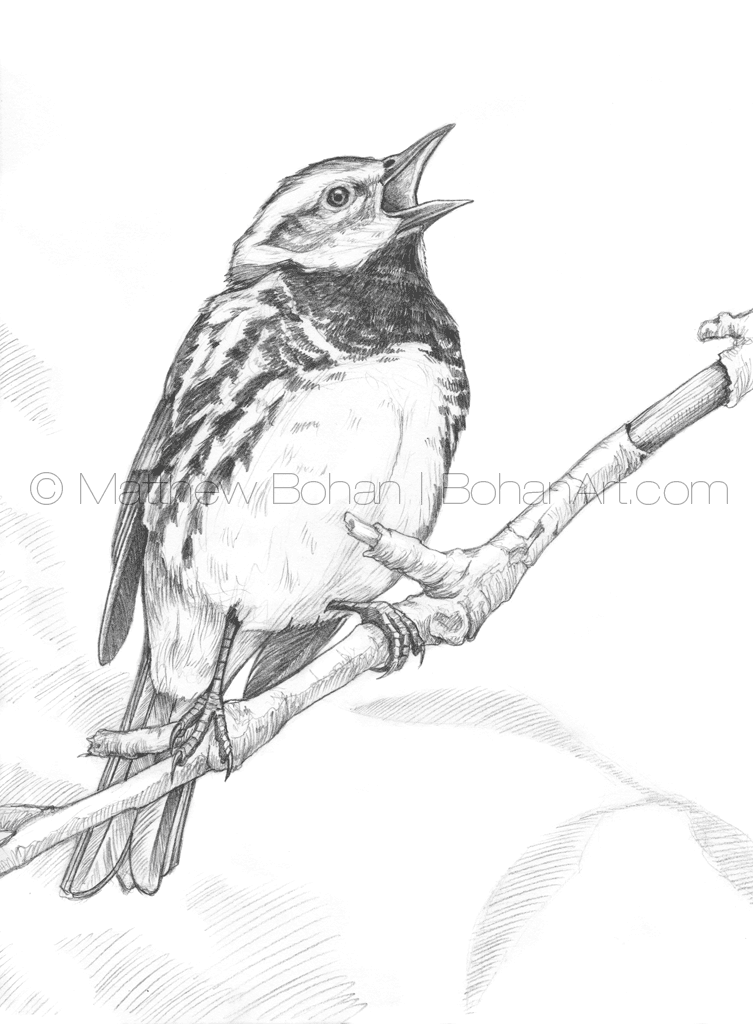
Years ago I read a quote by a famous bird photographer that stuck in my mind. He proclaimed, “Pictures of birds singing are hard to make but easy to sell!” I don’t know if that can be extrapolated to paintings, but it is a great statement about the market for bird photography. Getting a photo of a bird at that brief instant is tough, but it does really make for a compelling image. As far as a painting goes, it isn’t any harder to render than the same bird with its mouth shut. I was lucky to get the reference photo of a singing bird at Magee Marsh in Ohio for this sketch.
Similarly, birds eating berries can make for beautiful photos. A Cedar Waxwing, American Robin or Gray Catbird gulping down a berry is a sure-fire winner. It’s funny—things that make for good bird photos would undoubtedly ruin a good portrait of a human. Take a photo of someone talking while eating and try selling that! Yeeechhh! It’s like watching a front-loading washing machine in motion—a distorted face with all sorts of nastiness sloshing around in a whirlpool of horror. I don’t think any human can pull off that look!
Female/Immature Common Redpoll Painting (10×7-inch Watercolor and Time Lapse Video)

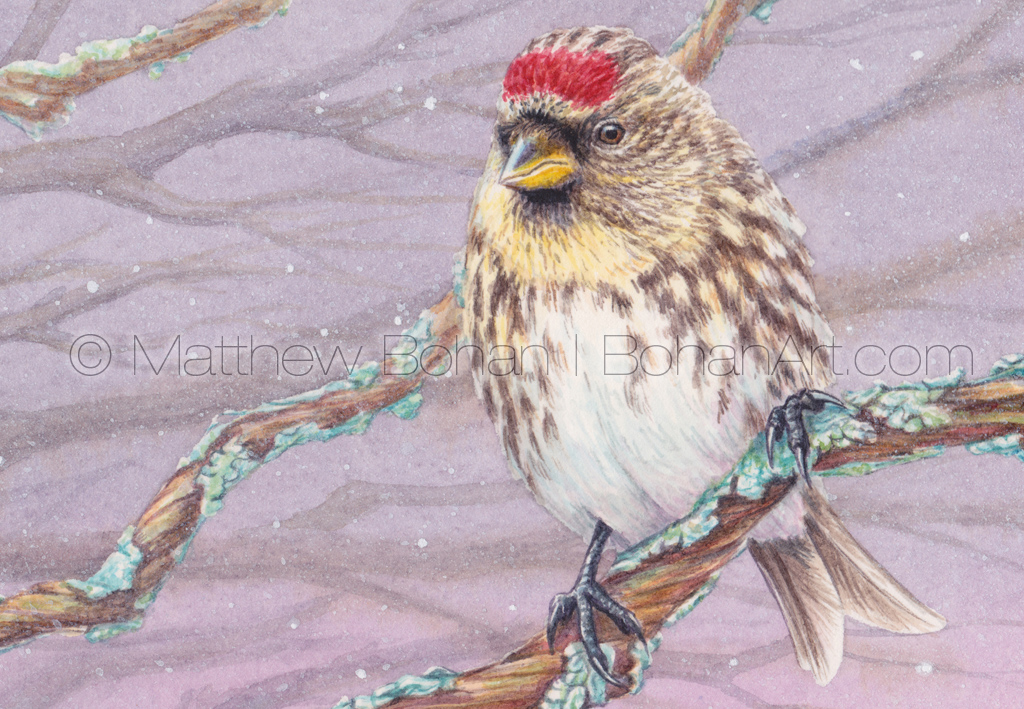
It’s been over a month since I posted. I’ve been insanely busy with medical illustration and animation work, which is good, since my freelance work tends to be “Feast or Famine.” Plus, it was peak season for mountain biking. This blog is the first thing to suffer during a big time crunch. I’d rather post less and use the time to get in some painting. This particular painting was fairly speedy.
I often find myself painting off-season: winter scenes in summer and summer scenes in winter. I think you can be more positive about the opposite end of the calendar at times, so a redpoll seemed like the way to go.
I first saw Common Redpolls on a frozen, windy Christmas morning. Now that was an unexpected gift! Since then I’ve had the pleasure of seeing them many times, but there is still always a great thrill when they pop in for a visit. They have been occasional winter visitors at out thistle feeders.
I had crisp photos of this immature female, but they had a drab, gray background. The one I chose had a clear image but lacked any wintery magic, looking a bit oppressive instead. I wanted to play with a more colorful, snowy background to make it different from—and more inviting than—the photos I got from the kitchen window.
Typically I paint transparent watercolors. That means that any white on the page is the white of the paper. This adds a level of difficulty to the painting when you have to paint around tiny details like the highlights of eyes to retain the white. With snowy scenes there is really no good way around it. You have to go with opaque whites.
Using opaque watercolors (gouache) for snow requires taking a perfectly good, almost completely finished background and spattering white paint on it, which can go disastrously wrong. That adds to my general reluctance to do snowy scenes. Once I had everything else wrapped up on this painting, I put it away for the night to decide if I really, really, REALLY wanted to have snow on the background. In the morning I realized that my main reason for omitting the snow wasn’t that the painting would no longer be 100% transparent watercolor or that the snow would be frivolous. It was that I was afraid of screwing it up while putting in the snow. Well, who wants to be called a coward?! So I “damned the torpedoes” and set about spattering white paint onto a perfectly good painting. In the end I was glad that I did. I think it added a level of depth, interest and atmosphere. I’ve included a copy of the “No Snow” version as well. What do you think?

